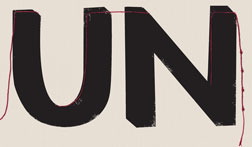Submitted by Victor on
The rights of children with disabilities are specifically recognised in article 23 of the CRC, but the Convention on the Rights of Persons with Disabilities (the Convention) and its Optional Protocol establishing a complaints procedure expand these rights. These treaties were adopted on 13 December 2006 and entered into force on 3 May 2008. Together, they challenge the medicalisation of disability which locates the “problem” with the individual - a problem to be met with charity. Instead they focus on the human rights of persons with disabilities.
In other words, they recognise that it is not individuals’ impairments that are disabling as such; but rather the attitudes and environment around them that are disabling and stop them from accessing society. This puts the onus on the State and others to guarantee their rights and provide avenues for redress where these are violated.
All the rights recognised in the Convention apply to children with disabilities, and in fact, the number of specific references to children in the Convention is second only to the CRC among the UN’s core human rights conventions.
In this context, in 2011, CRIN launched the Children’s Rights Wiki (the Wiki), an online tool which brings together all information about children’s rights country by country, as part of our efforts to draw attention to all violations of children’s rights globally. The Wiki includes extracts of recommendations issued by UN human rights mechanisms, such as UN special procedures and treaty bodies, including the Human Rights Committee, highlighting violations of children’s rights.
The aim is to draw a clear picture of persistent violations of children’s rights in a given country, as raised by the UN human rights mechanisms, with the eventual goal of matching them with avenues of redress. Equally, the extracts reveal gaps in reporting on certain violations of children’s rights by civil society.
This analysis of children’s rights in the concluding observations and general comments of the Committee looks at how the Covenant is interpreted for children by the Committee, focusing on the most frequently raised violations as well as those that are rarely - if ever - addressed.
The aim is twofold: we hope to encourage the Committee to address all children’s rights and to help advocates strengthen their reporting on children’s rights issues.
The analysis is evolving, rather than comprehensive, and is meant as a starting point for others to take on. We welcome comments at [email protected].

